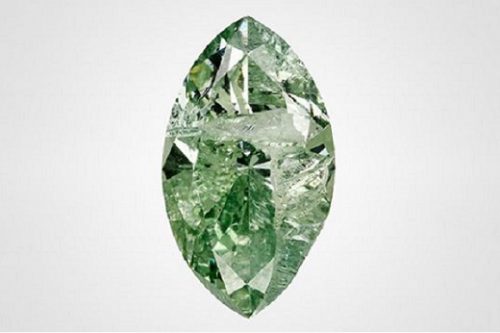
The Gemological Institute of America (GIA) plans to close or heavily scale back its Antwerp operations following a review of its business in the Belgian city.
“Based on global and local market conditions and activity, and the impact of the global pandemic, the GIA conducted an evaluation of the long-term viability of GIA Belgium,” a spokesperson for the organization told Rapaport News on Friday. “As a result of that evaluation, we have the intention to close or significantly reduce the GIA laboratory and offices in Antwerp, which will likely result in a reduction in staff.”
The GIA invested in its Antwerp business as recently as 2018, expanding the office’s research and traceability services and adding diamond grading to its capabilities — though it also shuttered its Dubai branch the same year.
The decision about the “closure or near-closure” in Antwerp is not final, the GIA noted, and the group is consulting with staff members in Belgium.
Around 50 people could lose their jobs if the move goes through, according to Belgian newspaper Het Laatste Nieuws.
Belgium’s diamond industry has struggled in recent years amid a shift in manufacturing work to India and a reduction in bank lending to the sector. The coronavirus has intensified the situation: The country’s polished exports for 2020’s second quarter slid 71% year on year to $813.2 million as global demand plummeted and shipping routes shut down. The GIA lab closed for almost two months during the pandemic.
The laboratory will maintain its current operations in the meantime, meaning clients will still be able to submit and pick up stones, the GIA stated.
Source: Diamonds.net

The Gemological Institute of America (GIA) has teamed up with IBM Research to develop an automated system for grading the clarity of a diamond.
The artificial intelligence (AI) technology uses data from tens of millions of diamonds GIA laboratories have examined in the past, applying the institute’s existing grading standards. It’s already in limited use at the GIA’s New York and Carlsbad laboratories, the institute said Monday.
Grading laboratories have increasingly invested in AI in recent years, as it promises more accurate and consistent results. Sarine Technologies unveiled its automated color and clarity grading equipment in 2016, while the GIA has been working with IBM on the joint project for around two years.
“IBM’s AI technology, combined with GIA’s expertise, extensive data and gemological-research capabilities, enables us to deliver advancements in consistency, accuracy and speed unlike any other organization,” said Tom Moses, the GIA’s executive vice president and chief laboratory and research officer.
The program will initially include the most popular diamond sizes. The GIA aims to expand it to other sizes, shapes and qualities in the future. The GIA and IBM are planning other collaborations combining gemological evaluation with AI.
Source: Diamonds.net

The Gemological Institute of America (GIA) has reopened laboratories in five locations following COVID-19 shutdowns.
The organization’s labs in Johannesburg and Tokyo recommenced limited operations on May 7, the GIA said Monday. Visitors to the Johannesburg lab must make an appointment, have a permit, and wear a mask. The Tokyo location will accept and return goods by delivery only.
On May 11, the GIA resumed operations at its locations in Antwerp and in Gaborone, Botswana. While Antwerp is receiving customers by appointment only, Gaborone is open with a limited capacity to comply with government mandates and allow for proper social distancing, the GIA noted. The lab in Carlsbad, California, reopened May 18, with submission of goods only accepted by shipment.
Labs in Bangkok, Hong Kong and Ramat Gan, Israel, are all open, and are operating with regular hours. Operations in Mumbai, Surat and New York remain closed.
“Our first priority is to protect the health and safety of all staff, clients and visitors,” said Tom Moses, the GIA’s executive vice president and chief research and laboratory officer. “As we work to meet our clients’ needs whenever and wherever possible, we are planning for the safe opening of all other GIA locations as soon as conditions and government authorities permit.”
Source: Diamonds.net

The Gemological Institute of America (GIA) has identified a stone comprising two halves of a diamond that had been stuck together with an “unknown adhesive.”
Graders noticed a large fracture and cavity on the table of the marquise-cut, 1.38-carat polished diamond submitted to the GIA’s laboratory in Carlsbad, California, for colored-diamond testing. When the gemologists examined the crack under a microscope, they noticed a gap running down the stone from the crown to the pavilion, as well as a slight misalignment in the facets and air bubbles inside the fracture.
The polish lines on the stone’s facets would have linked if there hadn’t been a fracture, GIA gemologist Troy Ardon explained this month in a lab note in the latest edition of Gems & Gemology. For that reason, gemologists determined that the stone had been broken in half after it was at least partially polished, and then repaired with an unidentified adhesive.
“Diamonds have been adhered together with glue to form a diamond-doublet, but a broken diamond that has been repaired was not something previously reported by GIA,” Ardon added.
The GIA couldn’t grade the diamond because the 4Cs wouldn’t apply to it, the note continued. A carat weight would have been meaningless, as it would have comprised the weight of both halves plus the adhesive.
Image: Robison McMurtry/GIA
Source: diamonds.net




